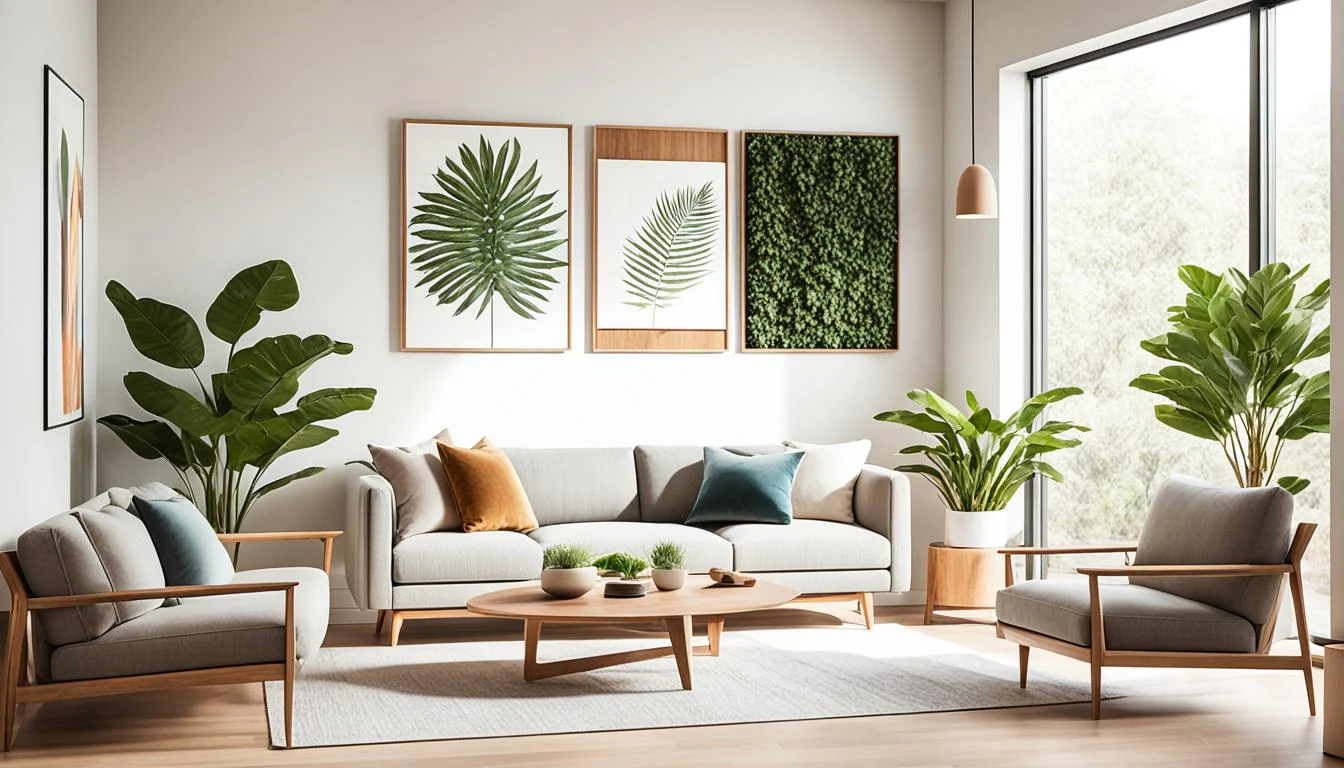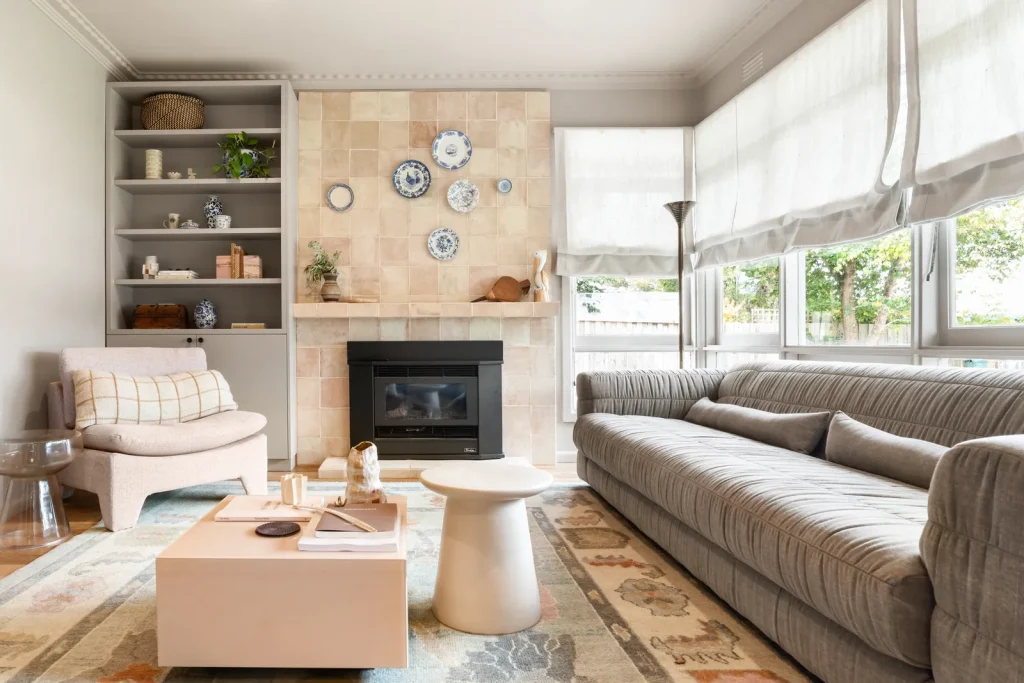The Astonishing Top 10 Interior Design Trends for 2025
As we step into 2025, the world of interior design continues to evolve, embracing new styles, materials, and technologies while revisiting timeless classics. Whether you’re planning a complete home makeover or just looking to update a room, understanding the latest trends can provide inspiration and direction. Here, we explore the top 10 interior design trends for 2025, offering insights and ideas to help you create a stylish and contemporary living space.
1. Sustainable and Eco-Friendly Design
Sustainability remains at the forefront of interior design trends in 2025. With increasing awareness of environmental issues, homeowners and designers are making conscious choices to reduce their ecological footprint. Sustainable design involves using eco-friendly materials, reducing waste, and choosing products that are both durable and recyclable.
Key Elements:
- Recycled and Upcycled Materials: Furniture and decor items made from recycled or upcycled materials are gaining popularity. Think reclaimed wood tables, recycled glass countertops, and repurposed metal fixtures.
- Natural and Organic Textiles: Opt for natural fibers like cotton, wool, linen, and jute for upholstery, rugs, and curtains. These materials are not only eco-friendly but also add a touch of warmth and comfort to your home.
- Energy-Efficient Lighting: LED lighting and energy-efficient appliances reduce energy consumption and help lower utility bills. Solar-powered lighting options are also becoming more accessible and stylish.
- Sustainable Furniture: Look for furniture made from responsibly sourced wood or bamboo. Pieces that are designed for longevity rather than fast fashion contribute to a more sustainable lifestyle.
2. Biophilic Design
Biophilic design is all about connecting indoor spaces with nature. This trend emphasizes the incorporation of natural elements to create a calming and rejuvenating environment. Biophilic design can enhance well-being, reduce stress, and improve overall mental health.
Key Elements:
- Indoor Plants: Adding greenery to your home can improve air quality and create a sense of tranquility. Consider a mix of large potted plants, hanging plants, and small succulents.
- Natural Light: Maximize natural light by using sheer curtains, skylights, and large windows. Mirrors can also help reflect light and make spaces feel brighter.
- Natural Materials: Use materials like wood, stone, and bamboo to bring an earthy feel to your interiors. These materials can be incorporated into flooring, furniture, and decorative accents.
- Water Features: Introducing a small water feature, like a tabletop fountain or an indoor pond, can create a soothing atmosphere and a visual connection to nature.
3. Earthy Tones and Warm Colors
The color palette for 2025 is shifting towards earthy tones and warm colors. These hues create a cozy and inviting ambiance, making your home feel like a sanctuary. Earthy tones are versatile and can be used in various design styles, from rustic to modern.
Key Elements:
- Terracotta and Rust: These warm, reddish-brown hues add a sense of comfort and can be used in accent walls, textiles, and decor items.
- Olive Green and Mustard Yellow: These colors bring a touch of nature indoors and pair well with neutral tones like beige and taupe.
- Deep Browns and Warm Neutrals: Shades of brown, from chocolate to caramel, create a rich and sophisticated look. Warm neutrals like ivory and sand can be used as a base for more vibrant accents.
4. Multifunctional Spaces
With the rise of remote work and flexible living arrangements, multifunctional spaces are becoming essential. Designing rooms that serve multiple purposes maximizes the utility of your home and allows for greater flexibility.
Key Elements:
- Home Offices: Create dedicated workspaces that can easily transition to other functions when needed. Consider foldable desks, ergonomic chairs, and smart storage solutions.
- Convertible Furniture: Invest in furniture that can adapt to different uses, such as sofa beds, extendable tables, and modular shelving units.
- Open-Plan Layouts: Open-plan designs allow for fluid movement between different areas of the home. Use room dividers, rugs, and furniture placement to delineate spaces without erecting walls.
- Hidden Storage: Maximize storage in multifunctional spaces with built-in cabinets, under-bed storage, and hidden compartments.
5. Vintage and Retro Styles
Nostalgia for the past continues to influence interior design, with vintage and retro styles making a strong comeback. These styles add character and charm to modern homes, blending the old with the new for a unique and eclectic look.
Key Elements:
- Mid-Century Modern Furniture: Iconic pieces from the mid-20th century, such as Eames chairs and teak sideboards, are highly sought after for their timeless appeal and functional design.
- Retro Color Schemes: Bold colors and patterns from the ’60s and ’70s, like avocado green, mustard yellow, and geometric prints, can be used to create a playful and vibrant atmosphere
- Antique Accents: Incorporate antique or vintage items like mirrors, lamps, and artwork to add a touch of history and personality to your home.
- Mix and Match: Combine vintage and modern elements to create a balanced and harmonious design. For example, pair a retro armchair with a contemporary sofa or use vintage textiles in a modern bedroom.
6. Minimalism with a Twist
Minimalism remains popular, but in 2025, it’s evolving to include more personality and warmth. This trend focuses on clean lines and uncluttered spaces while allowing for more decorative elements and textures.
Key Elements:
- Neutral Base: Start with a neutral color palette, using shades of white, gray, and beige as the foundation.
- Texture and Layers: Add interest through textures and layers. Think about soft rugs, woven blankets, and textured wall coverings.
- Statement Pieces: Incorporate a few bold statement pieces, such as a unique light fixture, an abstract painting, or a sculptural piece of furniture, to create focal points.
- Functional Aesthetics: Choose furniture and decor that are both beautiful and functional. Items that serve a purpose while enhancing the aesthetic appeal are key to this trend.
7. Technological Integration
Smart homes and technological integration are becoming increasingly important in interior design. The seamless incorporation of technology can enhance the functionality and convenience of your living space.
Key Elements:
- Smart Lighting: Use smart lighting systems that can be controlled via smartphone apps or voice assistants. These systems allow you to adjust brightness and color temperature to suit different moods and activities.
- Home Automation: Integrate home automation systems to control everything from heating and cooling to security and entertainment. This can include smart thermostats, automated blinds, and connected home security systems.
- Built-In Charging Stations: Designate areas in your home for charging devices, with built-in USB ports and wireless charging pads integrated into furniture.
- High-Tech Appliances: Choose appliances that offer advanced features and connectivity, such as smart refrigerators, ovens, and washing machines that can be controlled remotely.
8. Maximalism and Bold Patterns
On the opposite end of the spectrum from minimalism, maximalism celebrates bold patterns, vibrant colors, and eclectic decor. This trend is all about expressing individuality and creating visually stimulating environments.
Key Elements:
- Layered Patterns: Combine different patterns, such as florals, stripes, and geometric prints, to create a rich and dynamic look. The key is to find a common color palette to tie everything together.
- Bold Colors: Use vibrant colors like emerald green, royal blue, and magenta to make a statement. These colors can be used on walls, furniture, and accessories.
- Eclectic Decor: Mix and match decor items from different eras and styles to create a unique and personalized space. This can include vintage finds, modern art, and global-inspired pieces.
- Gallery Walls: Create gallery walls with a mix of artwork, photographs, and decorative objects. This adds visual interest and allows you to showcase your personality and interests.
9. Personalized and Custom Spaces
Personalization is becoming a key trend in interior design, with homeowners seeking to create spaces that reflect their unique tastes and lifestyles. Customization allows for a more tailored and meaningful design.
Key Elements:
- Bespoke Furniture: Invest in custom-made furniture that fits your space perfectly and meets your specific needs. This can include built-in bookcases, custom cabinetry, and tailor-made sofas.
- Personal Art and Decor: Display personal artwork, family photos, and memorabilia to make your home feel more intimate and personalized.
- Custom Textiles: Use custom-designed textiles, such as curtains, pillows, and upholstery, to add a unique touch to your decor.
- DIY Projects: Get creative with DIY projects that allow you to put your stamp on your home. This can include handmade furniture, painted murals, and crafted decor items.
10. Wellness-Focused Design
Creating a home that promotes wellness and relaxation is a major trend for 2025. This involves designing spaces that support physical and mental well-being, incorporating elements that reduce stress and enhance comfort.
Key Elements:
- Calming Colors: Use soothing colors like soft blues, greens, and neutrals to create a peaceful atmosphere.
- Comfortable Furniture: Choose furniture that prioritizes comfort, such as plush sofas, ergonomic chairs, and cozy beds.
- Wellness Spaces: Designate areas in your home for wellness activities, such as meditation corners, home gyms, and spa-like bathrooms.
- Air and Water Quality: Invest in air purifiers, humidifiers, and water filtration systems to improve the quality of your indoor environment.
Conclusion
The top 10 interior design trends for 2025 reflect a diverse and dynamic approach to creating beautiful and functional living spaces. From sustainable and eco-friendly designs to personalized and wellness-focused interiors, these trends offer something for everyone. By incorporating elements from these trends, you can create a home that is stylish, comfortable, and uniquely yours.
As you explore these interior design trends, remember that the most important aspect of interior design is creating a space that feels like home to you. Whether you prefer the clean lines of minimalism or the vibrant energy of maximalism, there’s a trend that can help you achieve your vision. Happy decorating!

